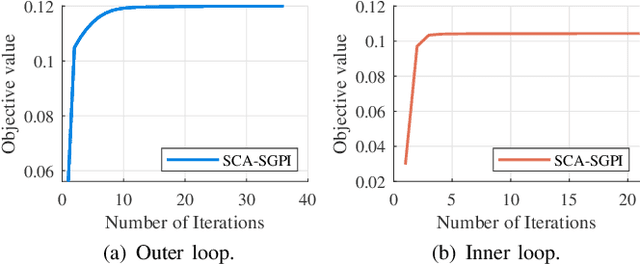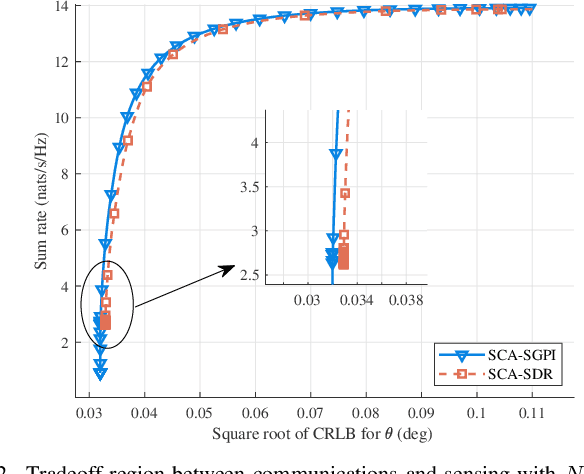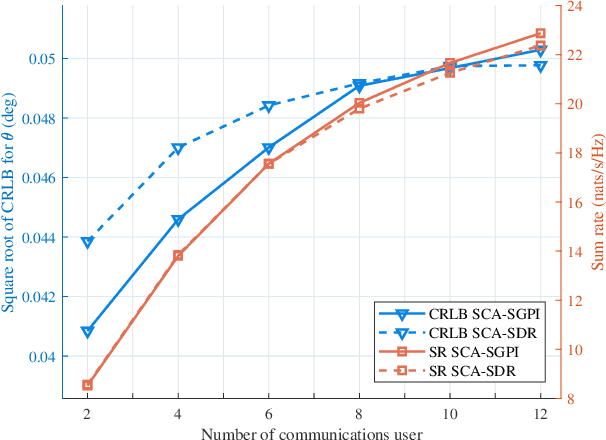Markku Juntti
6G Resilience -- White Paper
Sep 10, 2025Abstract:6G must be designed to withstand, adapt to, and evolve amid prolonged, complex disruptions. Mobile networks' shift from efficiency-first to sustainability-aware has motivated this white paper to assert that resilience is a primary design goal, alongside sustainability and efficiency, encompassing technology, architecture, and economics. We promote resilience by analysing dependencies between mobile networks and other critical systems, such as energy, transport, and emergency services, and illustrate how cascading failures spread through infrastructures. We formalise resilience using the 3R framework: reliability, robustness, resilience. Subsequently, we translate this into measurable capabilities: graceful degradation, situational awareness, rapid reconfiguration, and learning-driven improvement and recovery. Architecturally, we promote edge-native and locality-aware designs, open interfaces, and programmability to enable islanded operations, fallback modes, and multi-layer diversity (radio, compute, energy, timing). Key enablers include AI-native control loops with verifiable behaviour, zero-trust security rooted in hardware and supply-chain integrity, and networking techniques that prioritise critical traffic, time-sensitive flows, and inter-domain coordination. Resilience also has a techno-economic aspect: open platforms and high-quality complementors generate ecosystem externalities that enhance resilience while opening new markets. We identify nine business-model groups and several patterns aligned with the 3R objectives, and we outline governance and standardisation. This white paper serves as an initial step and catalyst for 6G resilience. It aims to inspire researchers, professionals, government officials, and the public, providing them with the essential components to understand and shape the development of 6G resilience.
Positioning via Probabilistic Graphical Models in RIS-Aided Systems with Channel Estimation Errors
Aug 25, 2025Abstract:We propose a 6D Bayesian-based localization framework to estimate the position and rotation angles of a mobile station (MS) within an indoor reconfigurable intelligent surface (RIS)-aided system. This framework relies on a probabilistic graphical model to represent the joint probability distribution of random variables through their conditional dependencies and employs the No-U-Turn Sampler (NUTS) to approximate the posterior distribution based on the estimated channel parameters. Our framework estimates both the position and rotation of the mobile station (MS), in the presence of channel parameter estimation errors. We derive the Cramer-Rao lower bound (CRLB) for the proposed scenario and use it to evaluate the system's position error bound (PEB) and rotation error bound (REB). We compare the system performances with and without RIS. The results demonstrate that the RIS can enhance positioning accuracy significantly.
RIS-assisted ISAC Systems for Industrial Revolution 6.0: Exploring the Near-field and Far-field Coexistence
Jul 10, 2025



Abstract:The Industrial Internet of Things (IIoT) has emerged as a key technology for realizing the vision of Industry 6.0, requiring the seamless integration of diverse connected devices. In particular, integrated sensing and communication (ISAC) plays a critical role in supporting real-time control and automation within IIoT systems. In this paper, we explore reconfigurable intelligent surface (RIS)-assisted ISAC systems for IIoT in the coexistence of near-field and far-field regions. The system consists of a full-duplex access point (AP), a RIS and multiple IIoT devices, where the near-field devices simultaneously perform sensing and communication, while the far-field devices rely on a RIS-assisted communication. To enhance spectral efficiency for both sensing and communication functionalities, we consider the use of both traditional sensing-only (SO) and ISAC frequency bands. Moreover, uplink non-orthogonal multiple access (NOMA) is employed to facilitate the sequential decoding of superimposed communication and sensing signals from IIoT devices. To maximize sensing accuracy in terms of Cram${\Grave{\textrm{e}}}$r-Rao bound (CRB), we formulate a joint optimization of RIS phase shift, bandwidth splitting ratio and receive beamforming vector subject to the minimum data rate requirements of IIoT devices and resource budget constraints. The algorithmic solution is developed via the successive convex approximation (SCA)-based alternating optimization (AO) method with the semi-definite relaxation (SDR) technique. Numerical results demonstrate that the proposed method significantly outperforms conventional methods relying solely on either ISAC or SO band by achieving superior performance across RIS and device configurations, while ensuring robust ISAC performance under the near-field and far-field coexistence scenarios.
Constrained Multimodal Sensing-Aided Communications: A Dynamic Beamforming Design
May 15, 2025Abstract:Using multimodal sensory data can enhance communications systems by reducing the overhead and latency in beam training. However, processing such data incurs high computational complexity, and continuous sensing results in significant power and bandwidth consumption. This gives rise to a tradeoff between the (multimodal) sensing data acquisition rate and communications performance. In this work, we develop a constrained multimodal sensing-aided communications framework where dynamic sensing and beamforming are performed under a sensing budget. Specifically, we formulate an optimization problem that maximizes the average received signal-to-noise ratio (SNR) of user equipment, subject to constraints on the average number of sensing actions and power budget. Using the Saleh-Valenzuela mmWave channel model, we construct the channel primarily based on position information obtained via multimodal sensing. Stricter sensing constraints reduce the availability of position data, leading to degraded channel estimation and thus lower performance. We apply Lyapunov optimization to solve the problem and derive a dynamic sensing and beamforming algorithm. Numerical evaluations on the DeepSense and Raymobtime datasets show that halving sensing times leads to only up to 7.7% loss in average SNR.
Exploiting Symmetric Non-Convexity for Multi-Objective Symbol-Level DFRC Signal Design
Apr 19, 2025Abstract:Symbol-level precoding (SLP) is a promising solution for addressing the inherent interference problem in dual-functional radar-communication (DFRC) signal designs. This paper considers an SLP-DFRC signal design problem which optimizes the radar performance under communication performance constraints. We show that a common phase modulation applied to the transmit signals from an antenna array does not affect the performance of different radar sensing metrics, including beampattern similarity, signal-to-interference-plus-noise ratio (SINR), and Cram\'er-Rao lower bound (CRLB). We refer to this as symmetric-rotation invariance, upon which we develop low-complexity yet efficient DFRC signal design algorithms. More specifically, we propose a symmetric non-convexity (SNC)-based DFRC algorithm that relies on the non-convexity of the radar sensing metrics to identify a set of radar-only solutions. Based on these solutions, we further exploit the symmetry property of the radar sensing metrics to efficiently design the DFRC signal. We show that the proposed SNC-based algorithm is versatile in the sense that it can be applied to the DFRC signal optimization of all three sensing metrics mentioned above (beampattern, SINR, and CRLB). In addition, since the radar sensing metrics are independent of the communication channel and data symbols, the set of radar-only solutions can be constructed offline, thereby reducing the computational complexity. We also develop an accelerated SNC-based algorithm that further reduces the complexity. Finally, we numerically demonstrate the superiority of the proposed algorithms compared to existing methods in terms of sensing and communication performance as well as computational requirements.
Dynamic Joint Communications and Sensing Precoding Design: A Lyapunov Approach
Mar 18, 2025Abstract:This letter proposes a dynamic joint communications and sensing (JCAS) framework to adaptively design dedicated sensing and communications precoders. We first formulate a stochastic control problem to maximize the long-term average signal-to-noise ratio for sensing, subject to a minimum average communications signal-to-interference-plus-noise ratio requirement and a power budget. Using Lyapunov optimization, specifically the drift-plus-penalty method, we cast the problem into a sequence of per-slot non-convex problems. To solve these problems, we develop a successive convex approximation method. Additionally, we derive a closed-form solution to the per-slot problems based on the notion of zero-forcing. Numerical evaluations demonstrate the efficacy of the proposed methods and highlight their superiority compared to a baseline method based on conventional design.
Adaptive and Self-Tuning SBL with Total Variation Priors for Block-Sparse Signal Recovery
Mar 12, 2025

Abstract:This letter addresses the problem of estimating block sparse signal with unknown group partitions in a multiple measurement vector (MMV) setup. We propose a Bayesian framework by applying an adaptive total variation (TV) penalty on the hyper-parameter space of the sparse signal. The main contributions are two-fold. 1) We extend the TV penalty beyond the immediate neighbor, thus enabling better capture of the signal structure. 2) A dynamic framework is provided to learn the penalty parameter for regularization. It is based on the statistical dependencies between the entries of tentative blocks, thus eliminating the need for fine-tuning. The superior performance of the proposed method is empirically demonstrated by extensive computer simulations with the state-of-art benchmarks. The proposed solution exhibits both excellent performance and robustness against sparsity model mismatch.
Optimal ISAC Beamforming Structure and Efficient Algorithms for Sum Rate and CRLB Balancing
Mar 12, 2025



Abstract:Integrated sensing and communications (ISAC) has emerged as a promising paradigm to unify wireless communications and radar sensing, enabling efficient spectrum and hardware utilization. A core challenge with realizing the gains of ISAC stems from the unique challenges of dual purpose beamforming design due to the highly non-convex nature of key performance metrics such as sum rate for communications and the Cramer-Rao lower bound (CRLB) for sensing. In this paper, we propose a low-complexity structured approach to ISAC beamforming optimization to simultaneously enhance spectral efficiency and estimation accuracy. Specifically, we develop a successive convex approximation (SCA) based algorithm which transforms the original non-convex problem into a sequence of convex subproblems ensuring convergence to a locally optimal solution. Furthermore, leveraging the proposed SCA framework and the Lagrange duality, we derive the optimal beamforming structure for CRLB optimization in ISAC systems. Our findings characterize the reduction in radar streams one can employ without affecting performance. This enables a dimensionality reduction that enhances computational efficiency. Numerical simulations validate that our approach achieves comparable or superior performance to the considered benchmarks while requiring much lower computational costs.
Low-Complexity Cramér-Rao Lower Bound and Sum Rate Optimization in ISAC Systems
Feb 05, 2025



Abstract:While Cram\'er-Rao lower bound is an important metric in sensing functions in integrated sensing and communications (ISAC) designs, its optimization usually involves a computationally expensive solution such as semidefinite relaxation. In this paper, we aim to develop a low-complexity yet efficient algorithm for CRLB optimization. We focus on a beamforming design that maximizes the weighted sum between the communications sum rate and the sensing CRLB, subject to a transmit power constraint. Given the non-convexity of this problem, we propose a novel method that combines successive convex approximation (SCA) with a shifted generalized power iteration (SGPI) approach, termed SCA-SGPI. The SCA technique is utilized to approximate the non-convex objective function with convex surrogates, while the SGPI efficiently solves the resulting quadratic subproblems. Simulation results demonstrate that the proposed SCA-SGPI algorithm not only achieves superior tradeoff performance compared to existing method but also significantly reduces computational time, making it a promising solution for practical ISAC applications.
Deep Unfolding-Empowered MmWave Massive MIMO Joint Communications and Sensing
Nov 25, 2024



Abstract:In this paper, we propose a low-complexity and fast hybrid beamforming design for joint communications and sensing (JCAS) based on deep unfolding. We first derive closed-form expressions for the gradients of the communications sum rate and sensing beampattern error with respect to the analog and digital precoders. Building on this, we develop a deep neural network as an unfolded version of the projected gradient ascent algorithm, which we refer to as UPGANet. This approach efficiently optimizes the communication-sensing performance tradeoff with fast convergence, enabled by the learned step sizes. UPGANet preserves the interpretability and flexibility of the conventional PGA optimizer while enhancing performance through data training. Our simulations show that UPGANet achieves up to a 33.5% higher communications sum rate and 2.5 dB lower beampattern error compared to conventional designs based on successive convex approximation and Riemannian manifold optimization. Additionally, it reduces runtime and computational complexity by up to 65% compared to PGA without unfolding.
 Add to Chrome
Add to Chrome Add to Firefox
Add to Firefox Add to Edge
Add to Edge